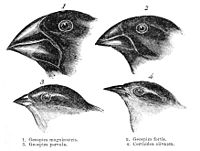
Photo from wikipedia
Natural Saccharomyces cerevisiae yeast strains exhibit very large genotypic and phenotypic diversity. Breeding programs that take advantage of this characteristic are widely used for selecting starters for wine industry, especially… Click to show full abstract
Natural Saccharomyces cerevisiae yeast strains exhibit very large genotypic and phenotypic diversity. Breeding programs that take advantage of this characteristic are widely used for selecting starters for wine industry, especially in the recent years when winemakers need to adapt their production to climate change. The aim of this work was to evaluate a marker assisted selection (MAS) program to improve malic acid consumption capacity of Saccharomyces cerevisiae in grape juice. Optimal individuals of two unrelated F1-hybrids were crossed to get a new genetic background carrying many “malic consumer” loci. Then, eleven quantitative trait loci (QTLs) already identified were used for implementing the MAS breeding program. By this method, extreme individuals able to consume more than 70% of malic acid in grape juice were selected. These individuals were tested in different enological matrixes and compared to their original parental strains. They greatly reduced the malic acid content at the end of alcoholic fermentation, they appeared to be robust to the environment, and they accelerated the ongoing of malolactic fermentations by Oenococcus oeni. This study illustrates how MAS can be efficiently used for selecting industrial Saccharomyces cerevisiae strains with outlier properties for winemaking.
Journal Title: Journal of Fungi
Year Published: 2021
Link to full text (if available)
Share on Social Media: Sign Up to like & get
recommendations!